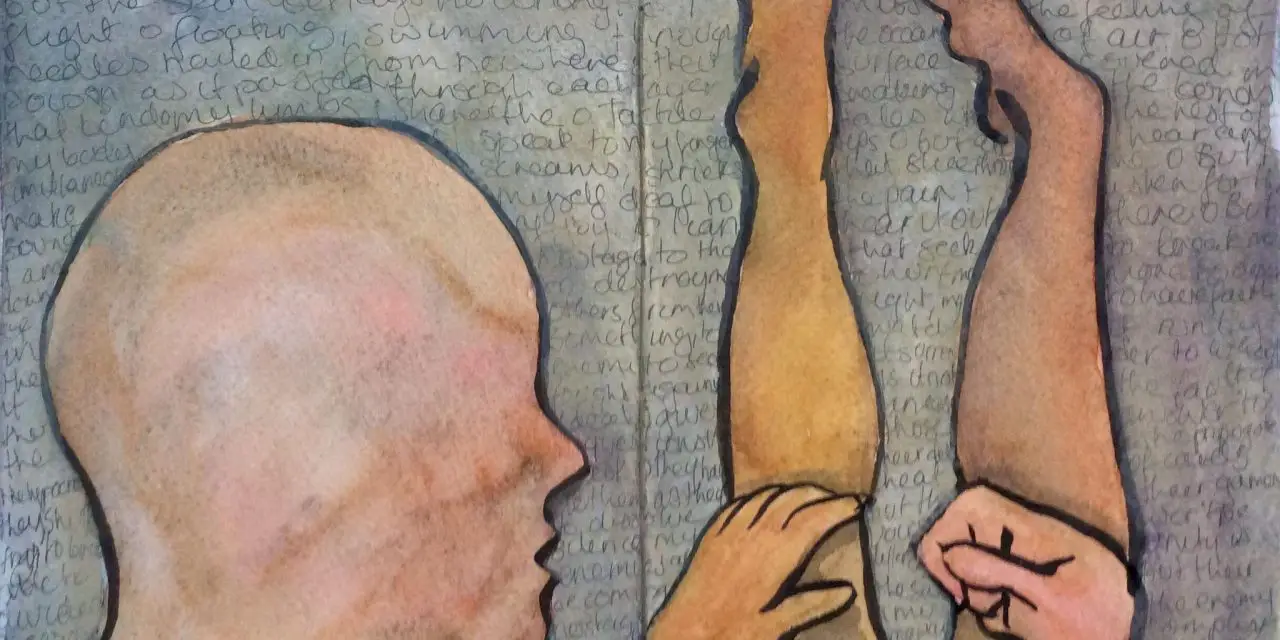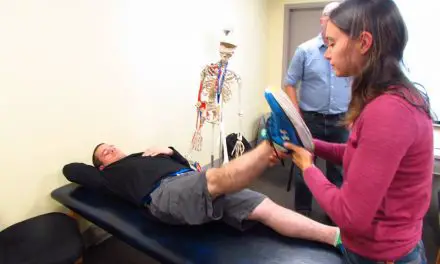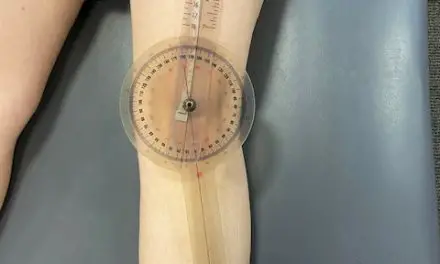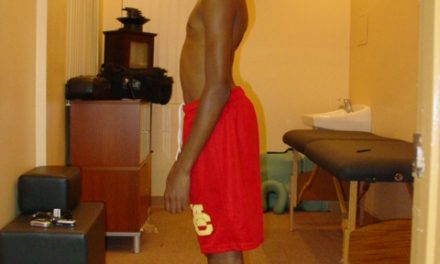Causalgia, algodystrophy, shoulder-hand syndrome, Sudeck’s atrophy: these are some of the names complex regional pain syndrome (CRPS) was called since the late 19th century as each generation of physicians get a better understanding of the disease. Until the end of World War II, CRPS was called “causalgia,” stemming from the Greek words καυσός (heat) and ἄλγος (pain), a common feature many clinicians in Europe observed back then.
In the mid-1940s, CRPS was called “reflex sympathetic dystrophy” (RSD), coined by Dr. James A. Evans, who was a physician at the Lahey Clinic in Burlington, Mass. The name came from Evans’ clinical observations of more than 50 patients with intense pain and with skin that is “rubor, pallor or a mixture of both, sweating and atrophy.”
Although his theory on what causes RSD was incomplete, that term was used for many decades until 1994 when the International Association of the Study of Pain (IASP) replaced RSD with CRPS.
But even this name wasn’t good enough. In the 2003 IASP conference in Budapest, Hungary, CRPS was categorized into I and II. Type I is where a nerve injury is not found, and type II is where a nerve injury is identified. So what’s the big deal about a name?
One researcher, Dr. Terence Coderre who works at McGill University in Montreal, Quebec, speculated if the history of CRPS research and treatment might have been different if another name had been used instead of “reflex sympathetic dystrophy.” What if it were called “ischemic intracompartmental pressure syndrome?” Or “traumatic arterial vasospasm?” The second term is what another physician Dr. Philip S. Foisie from Boston City Hospital called. He published a paper in 1947 that described another phenomenon and cause of CRPS that Evans did not touch upon a year earlier.
In 2011, Coderre had searched online with the keywords “traumatic arterial vasospasm” and “reflex sympathetic dystrophy” and found that many people had cited the latter term far more than the first one in the last few decades. One search on Medline yielded almost nothing about Foisie’s theory while Evans got referenced thousands of times since the 1960s. So why the difference?
Neither physician was wrong about the causal nature of CRPS. They didn’t just make up their ideas from thin air. Both men were influenced by previous clinicians who had made strides into improving the understanding and treatments of CRPS and various types of pain, and many of these observations were initially from military veterans who had suffered gunshot wounds and amputations.
Evans’ theory describes the abnormal function of the sympathetic nervous system (SNS) where the afferent nerves of the injured site get overloaded with nociceptive input, sparking activity in the central nervous system (CNS), which causes it to become hypersensitive to pain that normally do not induce pain—known as central sensitization.
Further reading: [Descending Modulation: Why Massage Therapy Can Alleviate Pain]
Postganglionic efferent—nerve fibers that connect the peripheral nervous system to the central nervous system which then connects to the brain’s basal ganglia—was proposed to induce spasms in the major arteries and ischemia at or near the injury site that increase capillary filtration pressure. This causes edema and swelling, a common symptom in the acute phase of CRPS.
Evans’ work was influenced by two physicians: Dr. Rafael Lorento de No, who proposed a merry-go-round of neural activity that cycles the pain in the spine; and Dr. William K. Livingston, who applied de No’s idea by performing sympathectomies (surgical procedure that cuts the sympathetic nerve or removal of the ganglion) at the painful site to break the cycle.
“Although Evans may have been wrong about the importance of the sympathetic nervous system, he was probably right about central nervous system (CNS) alterations, that we now refer to as central sensitization,” Coderre explained in an online interview. “With central sensitization, there is an amplification of peripheral inputs as they are transmitted to various brain structures involved in constructing the pain experience. When the amplification of sensory inputs persists for prolonged periods, this leads to various alterations in brain function that maintain various CNS-dependent CRPS symptoms.
“There is no need, then, for a vicious circle, but rather a straight-through pathophysiology whereby arterial vasospasms lead to microvascular dysfunction and tissue ischemia, which cause intense sensory inputs that drive central sensitization and subsequent CNS alterations.”
Foisie doubted that the sympathetic nervous system is the sole cause of CRPS because of his own experiments and observations in wounded soldiers. Although his theory is also based on arterial spasms like Evans’, Foisie noted that there is an increase of tissue tension during arterial spasms, which leads to a build-up of interstitial fluids and vascular permeability in the tissues.
In other words, blood and other fluids leak into other tissues near the injured site, which leads to inflammation, increased pressure in the tissues, and compressed capillaries that block the supply of oxygen and nutrients to the tissues.
Coderre mentioned that research in the past decades has been heavily biased toward Evans’ overactive SNS theory, which influenced most research into investigating the SNS.
“Evan’s theory promoted the idea of CRPS being due to hyperactivity of the sympathetic nervous system and a later concept of sympathetically-maintained pain,” Coderre explained. “It is now clear that as CRPS progresses, there is actually a blunting of sympathetic efferent activity, which I believe is probably a homeostatic reaction to arterial vasospasms.”
Coderre pointed to the evidence that poor nutrient supply in the blood due to reduced SNS activity causes the hot feeling and reddish skin color of the affected limb.
“[Because of] microvascular damage caused by prolonged arterial vasospasms in small vessels, the capillaries (where oxygen transfer into tissues occurs) become blocked, there is arteriovenous shunting, and tissue oxygenation is compromised,” Coderre said. “This is better described as ischemia-maintained pain where sympathetic blocks may be initially helpful by preventing further ischemia associated with vasoconstriction driven by normal sympathetic activity. As microvascular dysfunction and tissue ischemia become more significant, sympathetic blocks are less effective (as reducing vasospasms is no longer good enough), and the limb may become more and more cyanotic.”
So why was there such a heavy bias toward Evans’ theory while Foisie’s theory was almost entirely ignored?
“I can only speculate, but I believe Evans’ theory was adopted to a greater extent than Foisie’s because of what I call a ‘neuron-centric’ bias,” Coderre explained. “I believe pain physicians and pain researchers are over-obsessed with the nervous system, as pain is transmitted to the brain by peripheral nerves and central neurons. Evans’ vicious circle hypothesis implicated three separate neural elements—sensory afferent nerves, spinal neurons, and sympathetic efferent nerves—so [it] was very attractive.
“The central player in Foisie’s hypothesis was the microvasculature, which was less interesting to the pain field. Also, the understanding of microvascular dysfunction was not fully developed until years later when the importance of reperfusion to ischemic injury (i.e., ischemia-reperfusion injury) was discovered.”
Coderre thinks that CRPS research and treatments might have advanced much better than our current reality if both theories were equally emphasized. If that were to happen, he believed that there would’ve been a greater emphasis on preventative care, such as avoiding too much tightening of the limb casting, less immobilization after fractures and crush injuries, and using vitamin C to reduce free radicals in the blood and other tissues.
“There would have also been a greater emphasis on treatments that overcome tissue ischemia, such as exercise, massage, physiotherapy and osteotherapy, especially early during the course of syndrome,” Coderre said.
It took a long time for researchers and clinicians to realize that the SNS is not the sole cause of CRPS. And this was why the name RSD was changed to CRPS in 1994. Since the early 2010s, there has been a gradual effort in examining the effects of treatments for reducing ischemia. Coderre said that finding better ways to increase oxygen and nutrient supply to the affected tissues is another key to future treatments.
“Clinicians are largely moving away from performing multiple sympathetic blocks to break the vicious circle (as was done in the past),” Coderre said. “There may be temporary relief with a sympathetic block, as the resultant reduction of vasoconstriction may relieve ischemia-driven pain, but the effects don’t last, and as there is no viscous circle involving sympathetic activity, there is no benefit for multiple blocks.”
Further reading: Does Spinal Cord Stimulation Work for CRPS?
A native of San Diego for nearly 40 years, Nick Ng is an editor of Massage & Fitness Magazine, an online publication for manual therapists and the public who want to explore the science behind touch, pain, and exercise, and how to apply that in their hands-on practice or daily lives.
An alumni from San Diego State University with a B.A. in Graphic Communications, Nick also completed his massage therapy training at International Professional School of Bodywork in San Diego in 2014.
When he is not writing or reading, you would likely find him weightlifting at the gym, salsa dancing, or exploring new areas to walk and eat around Southern California.





